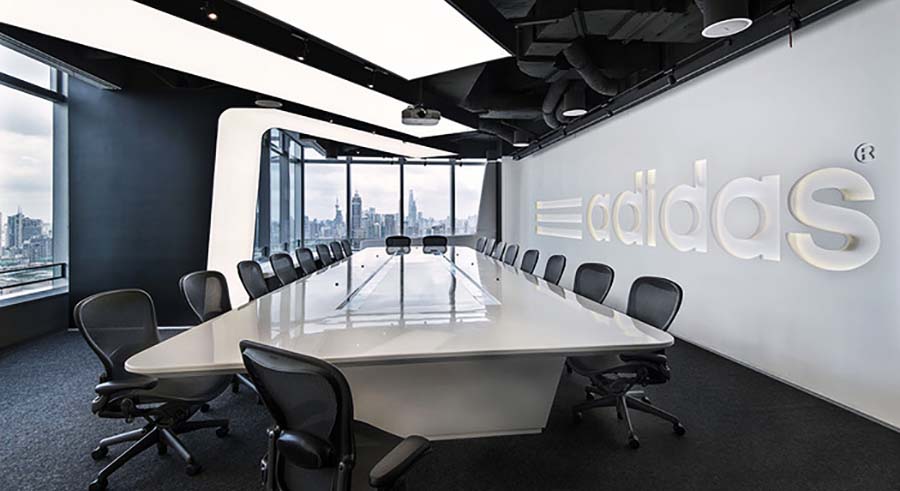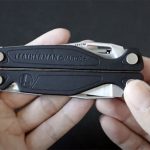Adidas AG said Wednesday that it returned to slight growth at constant currencies in the fourth quarter, boosted by e-commerce and retail sales and that it expects strong rebounds in its top and bottom lines and margins in 2021.
Major developments
- Strong finish to 2020 as currency-neutral sales return to growth in Q4;
- Top-line acceleration led by a 14 percent increase in direct-to-consumer (DTC) revenues, with e-commerce up 43 percent in Q4;
- E-commerce sales grow 53 percent in 2020, reaching a level of significantly more than €4 billion;
- Almost all markets recording sales increases in the quarter;
- Operating profit of €225 million in Q4 with operating margin back at prior-year level; and
- Healthy inventory level at year-end following significant inventory reduction in Q4.
Outlook for FY 2021
- Strong top-line increase expected with sales to grow at a mid- to high-teens rate;
- Gross margin to almost fully recover to a level of around 52 percent;
- Operating margin to rebound to a level of between 9 percent and 10 percent; and
- Net income from continuing operations of between €1.25 billion and €1.45 billion.
“2020 was a year like no other. But despite all the challenges we faced, we still used the year to make Adidas a better company. This is the result of a great team effort by all of our more than 60,000 employees. I am more than thankful for their enduring support and great commitment,” said Adidas CEO Kasper Rorsted. “Our business continued to recover towards year-end and we returned to growth in the fourth quarter. E-com was a standout throughout the year as we grew revenues in our most important store by 53 percent in 2020 to significantly more than €4 billion. We are confident about 2021 and will be fast out of the gate in the first year of our new strategic cycle, delivering mid- to high-teens sales growth globally.”
Financial Performance In Q4 2020
Sales Increase In Fourth Quarter Driven By 14 Percent Growth In DTC Business
Adidas delivered a strong finish to the year 2020 and returned to growth in Q4. Entering the fourth quarter, the company recorded double-digit growth rates across its biggest markets Greater China, North America and Europe in October. In Greater China, this momentum was sustained throughout the quarter as reflected by strong double-digit growth in the company’s DTC business in this market. At the same time, both North America and Europe were negatively impacted by the course of the pandemic from November onward. While stores in North America remained largely open, traffic continued to be materially below the prior-year level. Nevertheless, Adidas was able to grow revenues in this market in Q4. In Europe, about half of the company’s stores were closed until year-end, negatively impacting the sales development in the region. Across all markets, Adidas continued to experience exceptional growth in its e-commerce business. The company successfully executed its first ‘Members Week’ as well as impactful activations around major online sales events such as ‘11/11’ and ‘Cyber Week’. These efforts paid off, resulting in e-commerce growth of 43 percent. The strong sell-through of the company’s products is also reflected in the growth of 14 percent in the company’s direct-to-consumer business during the quarter.
Currency-Neutral Revenues Up 1 Percent In Q4
Overall, Adidas recorded sales growth of 1 percent on a currency-neutral basis in Q4, despite a tough prior-year comparison base and the challenging environment, especially in Europe. As currency headwinds persisted, sales for the company were down 5 percent to €5.548 billion in euro terms (2019: €5.838 billion).
All Markets, Except Europe, Record Sales Increases
On a currency-neutral basis, all markets except Europe posted sales increases in the fourth quarter. Asia-Pacific grew 1 percent, driven by a strong recovery in Greater China, where sales were up 7 percent. With an increase of 2 percent, sales in North America were also up compared to the prior year, driven by an improvement of 4 percent for the Adidas brand. Revenues in Europe were impacted by renewed lockdowns, with about half of the company’s stores closed at the end of the year. In addition, the market faced a tough comparison base due to the launch of products related to the UEFA European Football Championship, which had resulted in 14 percent sales growth in the prior-year quarter. As a result, revenues in Europe declined 6 percent in Q4. Sales in both Latin America and Emerging markets grew 7 percent, while Russia/CIS even recorded an increase of 21 percent.
Gross Margin Largely Flat As Promotional Activity Normalizes
In the fourth quarter of 2020, the gross margin declined 0.3 percentage points to 48.7 percent (2019, 49.0 percent). Continued headwinds from unfavorable currency effects represented the most material drag on gross margin in Q4. Promotional activity also continued to weigh on the company’s gross margin. This impact, however, was significantly less pronounced in Q4 compared to previous quarters, as the company’s focus on disciplined sell-in and profitable sell-through resulted in a normalization of promotional activities. These headwinds were largely offset by the benefits of a more favorable channel mix.
Operating Margin On Prior Year Level
Other operating expenses were down 7 percent to €2.512 billion during the fourth quarter (2019, €2.694 billion). As a percentage of sales, other operating expenses decreased 0.9 percentage points to 45.3 percent (2019, 46.1 percent). Marketing and point-of-sale expenses declined 13 percent to €730 million (2019, €842 million) and as a percentage of sales were down to 13.2 percent (2019, 14.4 percent). The decline was less pronounced than in the previous quarters, as Adidas started to reaccelerate marketing investments into the brand in preparation for a strong year ahead. Marketing efforts continued to be centered on product launches as well as on digital channels to support the company’s e-commerce business. Operating overhead expenses decreased 4 percent to €1.782 billion (2019, €1.852 billion). The company maintained its disciplined approach to costs, thereby offsetting increased logistics costs resulting from the exceptional growth in e-commerce. As a percentage of sales, operating overhead expenses increased only slightly to 32.1 percent (2019, 31.7 percent). Operating profit amounted to €225 million (2019, €245 million), resulting in an operating margin of 4.1 percent, largely in line with the prior-year level (2019, 4.2 percent). Net income from continuing operations was €138 million (2019, €181 million), leading to basic EPS from continuing operations of €0.68 (2019, €0.92).
Healthy Inventory Position At Year-End
Adidas successfully executed its plan to arrive at a healthy inventory position at year-end. During the fourth quarter, the company reduced its inventories by almost €300 million while at the same time effectively protecting its gross margin. At the end of December 2020, inventories were 8 percent higher versus the previous year at €4.397 billion (2019, €4.085 billion), or 14 percent higher on a currency-neutral basis. The delta compared to the prior-year level is primarily driven by evergreen and event-related products, which are intended for sale in the upcoming season. Overall, the inventory position forms a strong base for Adidas to accelerate growth in 2021. The accounts receivable decrease of 26 percent to €1.952 billion at the end of December 2020 partly offset the higher inventory levels (2019, €2.625 billion), reflecting fewer product shipments and the company’s efforts to focus on cash collection during the coronavirus pandemic. On a currency-neutral basis, receivables were down 21 percent. Accounts payable were down 12 percent to €2.390 billion at the end of December 2020 versus €2.703 billion in 2019, demonstrating the company’s effective cost control as well as proactive downward adjustment of the inbound flow of product. On a currency-neutral basis, accounts payable decreased 10 percent. As a result, average operating working capital as a percentage of sales increased 5.4 percentage points to 23.5 percent for the full year (2019, 18.1 percent).
Financial Performance In 2020
Currency-Neutral Sales Recover Fast In Second Half 2020
The sales development during the year 2020 was significantly impacted by the negative effects following the global outbreak of COVID-19. Especially the first half of the year saw a significant number of temporary store closures, both own- and partner-operated, and a pronounced traffic reduction within the remaining store fleet, with a corresponding negative impact on Adidas’ top-line development. In the second half of the year, global store opening rates increased to more than 90 percent. With the exception of Europe, Adidas’ store fleet remained largely operational until year-end. Traffic in the stores continued to improve as 2020 progressed, yet remained significantly below prior-year levels. At the same time, conversion rates stayed elevated as consumers that visited stores had a clearer buying intent. Throughout 2020, Adidas doubled down on e-commerce through targeted consumer marketing, exclusive product launches and prioritized supply chain management. This strong focus was reflected in global e-commerce sales growth accelerating to triple-digit rates during several months in 2020, and remaining at elevated levels even as stores reopened. E-commerce delivered exceptional growth of 53 percent in currency-neutral terms in 2020, reaching significantly more than €4 billion in revenues and accounting for more than 20 percent of total sales. Led by e-commerce, currency-neutral revenues in the company’s DTC business increased by 7 percent for the full year. Adidas’ business recovered quickly after having hit the low point in the second quarter, thanks to the decisive actions taken to mitigate the negative impact of COVID-19. Full-year revenues decreased 14 percent in currency-neutral terms. In euro terms, revenues decreased 16 percent to €19.844 billion (2019, €23.640 billion).
Revenue Decreases In Most Market Segments
The sales development in the different market segments reflects how the coronavirus pandemic spread from East to West during the first half of 2020. Asia-Pacific, including Greater China, was the first region to see a significant number of temporary store closures and a corresponding severe sales decline already in the first quarter of the year. Sales then recovered and Adidas closed the year with significant growth in Greater China in the fourth quarter. For the full-year, currency-neutral sales decreased 17 percent in Asia-Pacific and 15 percent in Greater China. After a strong start into the year, Europe and North America faced the most significant impact from the coronavirus pandemic in the second quarter of 2020. While North America finished the year with growth in the fourth quarter, stores in many parts of Europe had to close again from November onward after the market had already returned to growth in the third quarter. Overall, currency-neutral sales declined 9 percent in North America and 12 percent in Europe in 2020. Currency-neutral sales were down at double-digit rates in Latin America, 16 percent and Emerging Markets, -18 percent while remaining flat in Russia/CIS.
Gross Margin Of Almost 50 Percent Despite Temporary Headwinds
The company’s gross margin decreased 2.3 percentage points to 49.7 percent in 2020 (2019, 52.0 percent). A more favorable channel mix driven by the overproportionate growth of the DTC business as well as lower sourcing costs supported the gross margin. These tailwinds were more than offset by negative currency developments and increased promotional activity. The impact of the latter got significantly less pronounced as the year progressed due to the company’s focus on disciplined sell-in and profitable sell-through. In addition, an increase in inventory allowances, and purchase order cancellation costs related to the coronavirus pandemic, weighed on the gross margin development in 2020.
Operating Profit Of €751 million
As a result of the company’s strict cost control measures in 2020, other operating expenses decreased 6 percent to €9.229 billion (2019, €9.843 billion). As a percentage of sales, other operating expenses were up 4.9 percentage points to 46.5 percent (2019, 41.6 percent). Marketing and point-of-sale expenses declined 15 percent to €2.573 billion (2019, €3.042 billion) as Adidas took on a disciplined approach regarding physical marketing activities, while at the same time keeping up digital marketing investments to support its e-commerce business. As a percentage of sales, marketing and POS expenses were almost flat at 13.0 percent (2019, 12.9 percent). Operating overhead expenses decreased 2 percent to €6.656 billion (2019, €6.801 billion). The company recorded lower expenses for travel and IT projects, which offset increased logistics costs resulting from the exceptional growth in e-commerce. As a percentage of sales, operating overhead expenses increased 4.8 percentage points to 33.5 percent (2019, 28.8 percent). The operating profit development was significantly impacted by several coronavirus-related charges especially in the first half of 2020. These mainly consisted of product takebacks in Greater China, purchase order cancellation costs, the increase in inventory and bad debt allowances as well as the impairment of retail stores and the Reebok trademark, with a combined negative impact of around €500 million during the year. The company recorded an operating profit of €751 million in 2020 (2019, €2.660 billion), resulting in an operating margin of 3.8 percent (2019, 11.3 percent).
Net Financial Result Decreases
Financial income decreased 55 percent to €29 million in 2020 (2019, €64 million), while financial expenses were up 23 percent to €204 million (2019, €166 million). As a result, the company recorded a negative net financial result of €176 million (2019, negative €102 million). The company’s tax rate increased 0.3 percentage points to 25.4 percent in 2020 (2019, 25.0 percent).
Net Income From Continuing Operations Of €429 million
Net income from continuing operations decreased to €429 million in 2020 (2019, €1.918 billion). Basic EPS from continuing operations declined to €2.15 (2019,€9.70).
Financial Profile And Shareholder Returns
Strengthened Financial Profile
In the course of 2020, Adidas has optimized its capital structure at highly attractive conditions through several financing activities and received strong first-time investment-grade ratings by both Standard & Poors and Moody’s. Adjusted net borrowings amounted to €3.148 billion at the end of December 2020, compared to €4.173 billion in 2019. The company’s ratio of adjusted net borrowings over EBITDA increased to 1.5 at the end of December 2020 (2019, 1.1), well within the range to maintain current rating levels. To reflect changes in Adidas’ financial policy, the definition of net borrowings was changed to include the present value of the future lease and pension liabilities. At the end of December 2020, cash and cash equivalents were up 80 percent to €3.994 billion versus the prior-year level of €2.220 billion, mainly driven by effective short-term cash measures and the issuance of bonds.
Intention To Resume Dividend Payments
The Adidas Executive Board and Supervisory Board decided to resume the company’s dividend payments and will propose paying a dividend of €3.00 per dividend-entitled share for the financial year 2020 to Adidas shareholders at the Annual General Meeting on May 12, 2021. The dividend proposal, which reflects the company’s strengthened financial profile as well as Management’s positive outlook for the year 2021, would result in a total dividend payout of €585 million.
Outlook For 2021
Changes To Segmental Reporting
In preparation for the successful execution of its new strategy, Adidas has changed its organizational structure. Since January 1, 2021, Adidas manages Greater China as a separate market. The change reflects the importance of Greater China as a growth market for the company. The remaining Asia-Pacific market now comprises Japan, South Korea, Southeast Asia, and the Pacific region. In addition, Adidas has integrated the former markets Europe, Russia/CIS and Emerging Markets into the newly formed EMEA market to better leverage economies of scale. The markets in North America and Latin America remain unchanged.
Intended Divestiture Of Reebok
As part of the development of its new strategy, Adidas has assessed strategic alternatives for Reebok. As a result of this review, the company decided in February 2021 to begin a formal process aimed at divesting the brand. Adidas is going to report the Reebok business as discontinued operations from the first quarter 2021 onward and adjusts prior year periods accordingly. Consequently, the company’s outlook excludes Reebok.
Currency-Neutral Sales To Increase Mid- to High-Teens In 2021
With the company’s global store opening rate currently standing at above 95 percent, Adidas expects a strong top-line recovery in 2021. Sales are expected to increase at a mid- to high-teens rate on a currency-neutral basis. Revenues are anticipated to increase in all market segments with Greater China, Asia-Pacific and Latin America all projected to grow currency-neutral net sales in a range of between 20 percent and 30 percent. EMEA is expected to record growth in the mid-to high-teens, while North America is forecast to expand revenues at a high-single-digit rate.
Operating Margin To Rebound Sharply Between 9 Percent and 10 Percent
The company’s gross margin is expected to almost fully recover and reach a level of around 52 percent in 2021. Unfavorable currency developments, and higher sourcing costs, will continue to weigh on the gross margin development. These will be more than compensated by an improving pricing mix as discount levels normalize. Despite a significant increase in marketing activities and related investments, operating expenses are expected to grow at a materially lower rate than revenues due to effective cost management. As a result, the company’s operating margin is projected to rebound sharply to a level of between 9 percent and 10 percent. Net income from continuing operations is projected to increase to a level of between €1.25 billion and €1.45 billion.
Outlook Includes Temporary Stranded Costs Related To Intended Divestiture Of Reebok
The company’s outlook for operating profit includes temporary costs related to the intended divestiture of Reebok. These stranded costs are operating expenses for resources such as IT, stores, warehouses, offices and employees that have been used by both Adidas and Reebok in the past. As preparations started to set Reebok up as a stand-alone company, some of these shared capacities and resources and the associated costs will initially remain with Adidas before they will then be eliminated in the coming years. In 2021, these costs are expected to amount to around €250 million on the operating profit level and to impact net income from continuing operations by approximately €200 million. The medium-term growth outlook is not impacted by these costs as Adidas anticipates that only around 30 percent of the €250 million will reoccur in 2022 as the company will have largely passed them on, grown into them or actively managed them down. By 2023, the stranded costs are expected to be fully eliminated.
Photo courtesy Adidas















